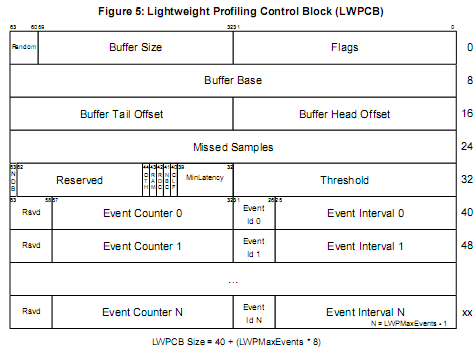Preparing For Future Software: AMD's Lightweight Profiling Proposal
by Ryan Smith on August 16, 2007 12:00 AM EST- Posted in
- CPUs
First Thoughts
In spite of the various performance opportunities offered by LWP it's important to note that this is by no means a silver bullet. Profiling tools in general are a very fine tool used to get the last, smallest parts of performance out of an application. Improved tools aren't a replacement for code that's better designed, or compilers that are better at identifying parallelizable code or more in tune with how a specific processor design performs. LWP won't solve the problem of poor implementations here hurting performance far more than a profiler can ever help.
More fundamentally however is that this is just a proposal, which is unusual for an industry that has silicon and roadmaps to go with new technology announcements. AMD has not announced what chip of theirs will be the first to implement the technology, and with Barcelona shipping this month we can safely assume that this technology won't be in that chip. The earliest we would see this technology would be in late 2008 with the Shanghai core, if not in 2009 with Bulldozer. Given the average two-year development cycle for most programs, this would push programs that make significant use of the technology out to 2010 and beyond, a long way away in the fast-changing computer industry.

There are also some miscellaneous issues that bear mentioning. Operating system support of the new instructions is required, and meanwhile Windows Vista does away with the ability to use the traditional interrupt controls; in a slightly humorous tone given the open-community nature of this proposal, AMD states "So let's figure one [method] out, or create a new one, or share an existing interrupt." There's also the question of Intel following AMD along with this as they have done on AMD's past few instruction set extensions; such a feature would be far more useful if both major vendors supported it.
Beyond LWP, AMD has indicated that there will be further new specifications released as part of the Extensions for Software Parallelism initiative. At this point AMD isn't offering any concrete details on what those will be, but our best guess would be general-use instructions for enhancing multithreading performance to go along with new hardware, and possibly more tools for developers. The former in particular was precedent in the x86 instruction set as Intel released a pair of such instructions as part of SSE3 for improving the performance of their now-abandoned hyperthreading technology.
With all of that said, we're left in an interesting situation where we're looking at a very interesting AMD proposal, but not a whole lot of hard numbers to back things up. For developers this proposal and the new instructions could be of significant help, but we're left without a way to measure or even predict the value of "significant." As we stated earlier, similar tools have offered an exceptional benefit to developers on embedded/closed platforms using standardized hardware, but we have to keep in mind that this isn't a perfect predictor for a general purpose computer.
Until AMD hammers out the finer details of their proposal and releases some hardware to go with it, we are going to be left with bated breath waiting for AMD to move this proposal to the next stage. We are looking forward to seeing what developers can do with such a dramatic leap in the ability of their profiling tools in the coming years.










11 Comments
View All Comments
Justin Case - Thursday, August 16, 2007 - link
But then there wouldn't be enough pages for the ads. :)